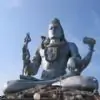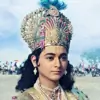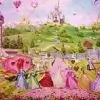THEY SAY LORD RAMA VOWED TO BE MONOGAMOUS!
NOT JUST THE VOW BUT THERE IS SOMETHING ELSE RELATED TO LEARN FROM IT!
THERE ARE MANY REASONS FROM DIFFERENT ASPECTS FOR ADHERENCE TO MONOGAMY...
Sanatana dharma does not support polygamy.
Marriage is for the sake of doing rituals and getting children.
Without a wife beside him as his better half, the husband can not do any yajna.(here yajna refers to any activity).
When one half is still with him, he can not create another half of himself,to be shared with another woman.
ACCORDING TO SCIENCE
This is corroborated in science too that all people are half brained!!
A woman is right-brained while the man is left- brained. The woman uses mostly and for most part of the time the right brain and the men, their left.
The right hemisphere of the brain stands for creativity, instincts, radical thoughts, originality etc. The left brain controls only actions.
It is note-worthy that both Saivite and Vaishnavite siddhanthams have given importance to the consort of the Lord in accordance with this reality.
Uma is in the left of Ardhanaareeshwara and Sri is at the heart of Vishnu.
She is the one who acts as the mind and thought force of the Lord Himself.
(A valid reason for how Sri became Purushakara bhoothai.)
It is due to this reason only, the vedas have clearly stipulated seating positions for the patni, near her pati differently on different occasions, in accordance with the nature of the occasion.
For instance, at the time of enthronement in the chariot (Vehicles in modern era),
on the bed of the couple, in ceremonial baths and making offerings, the wife should occupy a place at the left side of her husband.
In rituals like Kanyadaan (giving of daughter as wife), marriage,installation of idols, oblation,religious rites worship etc, the wife must occupy a place to the right side of her husband.
Since the latter is about duties to be performed, the patni is seated to his right as right denotes auspiciousness and in her being the controller of thoughts, instincts and insights.
At other times her position reveals her influence in matters concerning both of them.
It is in this context, the girl's role in being the cause of prosperity, auspiciousness comes into fore.
ACCORDING TO VEDAS
1. There is no single mantra in the entire 4 Vedas that even give a hint of supporting more than one wife or more than one husband.
2. Three mantras of Rig Veda, 1.124.7, 4.3.2 and 10.71.4 contain "Jaayeva Patya Ushatee Suvaasaah". This means that knowledge comes to the scholar in same manner as a dedicated joyous wife comes only to her husband. "Jaaya" means wife and "Pati" means husband. Both appearing in singular implies that only one husband-one wife relation is considered ideal.
3. Rigveda 1.3.3 states that God is like a dedicated wife with high character and purity. This also implies that monogamy alone is considered ideal.
4. Rigveda 10.149.4 compares love between God and devotee like that between dedicated wife and husband. Both "Jaaya" meaning wife and "Patim" meaning husband are used in singular number implying strict monogamy.
5. Rigveda 10.85.20 appeals a bride to expand happiness for her husband. Again both husband and wife are referred in singular.
6. Rigveda 10.85.23 appeals to wife and husband to always have self-control. Its obvious from reference to self-control and singular numbers for both wife and husband that monogamy alone is recommended.
7. All mantras relating to marriage are addressed in dual number to a couple of husband-wife implying one wife for husband and one husband for wife. Some examples are Rig Veda 10.85.24, 10.85.42, 10.85.47 and almost entire 14th Chapter of Atharva Veda which deals with subject of marriage. Most mantras pray for faithful relation for entire life-time.
Please note that Sanskrit has a dual number apart from singular and plural, specifically to remove this confusion that people may have.
8. In Atharva Veda 7.35.4 both husband and wife state that, "You establish me in your heart so that our minds become one and same."
9. In Atharva Veda 7.38.4, wife says that "You should only be mine. You should not even discuss about other women." What can be a more clear prohibition of polygamy than this!
10. Atharva Ved 3.30.2 and 14.2.64 also appeal husband and wife to be devoted and faithful to each other.
11. Perhaps Veda provider Ishwar knew that despite all this, some self-proclaimed experts may still find reasons to justify polygamy. Thus certain mantras in Vedas describe demerits of Polygamy.
- Rig Veda 10.105.8 compares existence of multiple wives with multiple worldly miseries.
- Rig Veda 10.101.11 states that a man with two wives is pressed from both sides and weeps like a horse that neighs when pressed from both sides by spokes while driving a chariot.
- Rig Veda 10.101.11 state that two wives make life aimless.
- Atharva Veda 3.18.2 prays that may a woman never face threat of another co-wife.
12. The only mantra that skeptics try to give in favor of polygamy in Vedas is Rig Veda 8.19.36 that contains "Vadhoonaam" and "Satpati" words. However, "Vadhoo" does not mean bride here and instead means powers that provide happiness. "Satpati" means protector of good, just as "Bhoopati" means protector of earth. This is also evident from the Devata or Key subject of the Sukta in which this mantra comes – prayers for charity and donation (Daanastuti). The mantra means that Ishwar gives variety of powers to those who protect truth and good.
DHARMA
Dharma is equal to both genders in this respect.
We even come to know from Varahamihira that the couple not only shared life
but also the good and bad of their karmas.
Varahamihira mentioned this in Brihad samhita by quoting dharma satras that are now extinct.
As per this, whatever the husband does, half of it goes to his wife.
Similarly whatever the wife does, half of it goes to the husband.
Based on this rationale, the injunctions were formed that a wife need not do any vedik karma such as doing homas or reciting Vedas, for, half of whatever that her husband gains by doing them anyway goes to her.
Similarly what ever dharma (like giving alms, feeding others etc) that she as the head of the Home does is shared by her husband.
That is why a marriage done in Vedic way can not be broken by any law of the land. They remain as husband and wife as long as they live.
This is the highest dharma which was exhibited by Rama.Eka patni vratham is a difficult one. But a man must adhere to it.
The core principle is that one can not live with more than one spouse at any given time.
In other words, polygamy is not supported and one is expected to be an 'eka-patni vrathan' of the one he has married.
SITA VIVAH
In Sita's vivaha,Janaka gave her to Rama to be his saha dharma chariNi,
that she will endure all that is going to happen to Rama.
The Sanskrit word 'saha' means "to endure" and Sita lived up to this till the end
and endured abandonment for the sake of this saha-dharma, that both Rama and Sita had to uphold.
The vivaha brings together the man and the woman to shoulder responsibly together.
Thus the arrival of the girl in marriage into a family is not for bringing in anything.
While it is admitted that Dashrath practiced polygamy, but the essence of entire Ramayan is that polygamy leads to troubles. The polygamy of Dashrath is considered to be the cause of trouble and grief that everyone faced. Ram is considered "Maryada Purushottam" or the "Ideal Man" because he re-established the Vedic norm of monogamy. Same was followed by all his brothers.
IN THE ASPECT OF MOKSHA(LIBERATION)
Moksha is attained after one crosses artha and kaama in a dharmic way.
The 4 purushaarthas are Dharma, artha, kaama and moskha.
The middle two are the testing grounds.
The first and the last are the links.
It is dharma that takes one to moksha.
But one must cross artha and kaama to reach moksha.
For this one must know what is the dharma in artha and kaama.
Artha is about the material life – the money and materials and the ways of attaining them.
Dharma must be adhered to in material acquisition.
Next is Kaama which is about personal life.
Dharma must be adhered to even in personal, sex life.
If not, one will be pulled back into the quagmire of unhappy re-births.
When a person adheres to dharma in material life and personal life,
Moksha is at a reachable distance.
That is why Sanatana dharma or Hindu dharma has laid clear cut rules for personal life too.
Monogamy is a virtue or a dharma of Kaama that helps one evolve better towards Final Emancipation!
THYAGARAJA'S QUOTE
In a krithi thyaagaraja sings "oka maata oka baanam oka pathni vrathude" - means
one having a commitment to one word, one arrow, one wife.
TULSIDAS' QUOTE
"Pardhan patthar jniye parstri mt samn,
Itnese Hari n mile to Tulsids jamn."
"Regard wealth other than your own as stone and a woman other than your wife as a mother. If then you do not attain God, Tulsidas will become your surety (to attain God)."
HENCE LORD RAM BEING ANTARYAMI KNEW THESE ASPECTS HENCE ADHERED TO THE DHARMA OF EKA-PATNI VRATHA!
SOURCES-VARIOUS...




































